Ask Ethan #89: The Universe’s Dark Ages
After the CMB, before the first stars, there was nothing to see. Or was there?
“[I]f there were no light in the universe and therefore no creatures with eyes, we should never know it was dark. Dark would be without meaning.” –C.S. Lewis
Last week on Ask Ethan, we answered where, exactly, the Cosmic Microwave Background (CMB) is in the Universe, with the short answer being, “everywhere at once, but emitted-and-released when the Universe was a mere 380,000 years old.” This week, after perusing through your submitted questions and suggestions, I saw that Steve Limpus asked for the next step in the story, inquiring as follows:
Please tell us the story of the era following the CMB — the mysterious ‘Dark Ages’!
I’d like to know more about the effect of gravity on the expansion of the universe during this epoch following ‘inflation’ and ‘decoupling’; also the first stars, and the formation of galaxies and super-massive black holes?
In the beginning and at the present, there’s a tremendous amount of energetic light: light that’s visible to our eyes and beyond. But there was an in-between time — a dark time — where there was none.
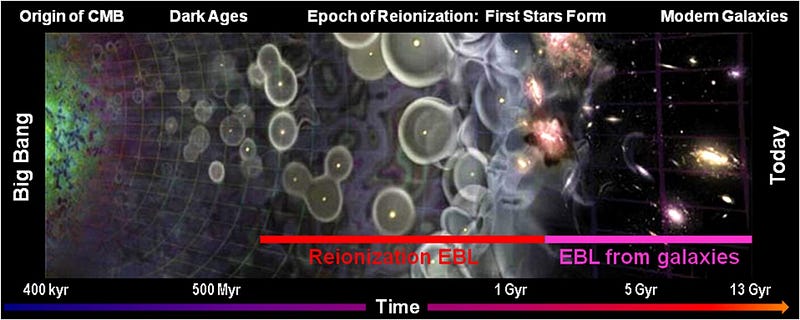
Today, of course, the Universe is full of structure, including heavy elements, organic molecules, moons, planets and life. On larger and self-luminous scales, we’ve got stars, star clusters, galaxies, clusters of galaxies, supernovae, quasars, and the vast cosmic web. In practically any direction, any location in space that we’re willing to look, we’re going to find a plethora of light-emitting objects. It seems that they’re limited only by the size of our telescopes and the amount of time we spend observing them.
If we look back at the farthest, most distant thing we can see, we come to a single surface in all directions: the Cosmic Microwave Background.
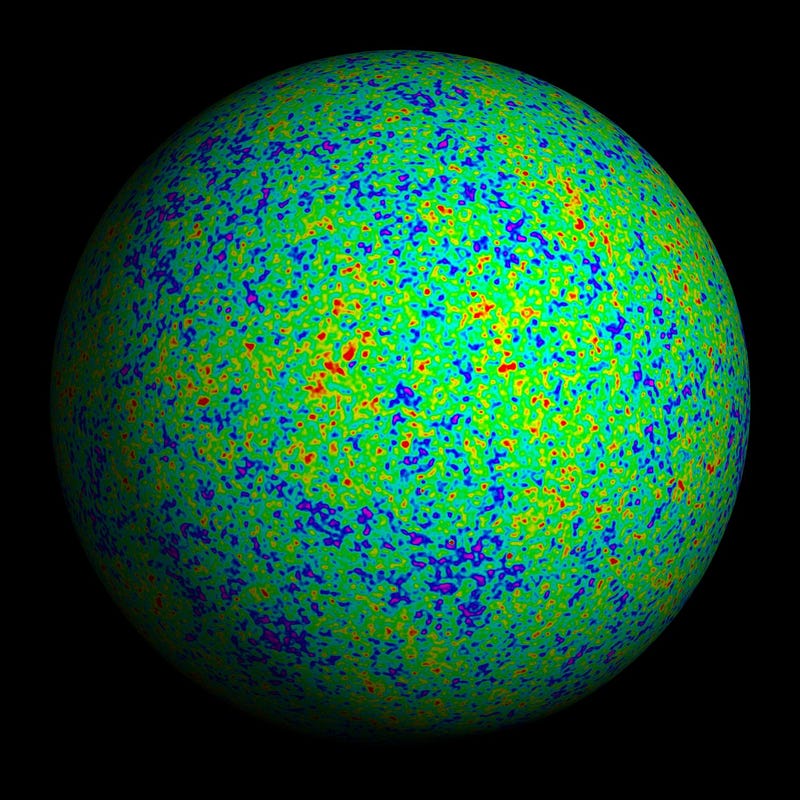
Back in the early stages of the Universe — at the hot Big Bang — the Universe was filled with everything that it was energetically possible to produce: photons, matter, antimatter, and quite conceivably a whole host or particles whose existence remains unknown to us today. As the Universe aged, it expanded, something it continues to do throughout time, including up through the present day. When the Universe expands, it cools as well, since the amount of energy in a photon is inversely proportional to its wavelength: stretch the photon’s wavelength as the Universe expands and the photon will cool.
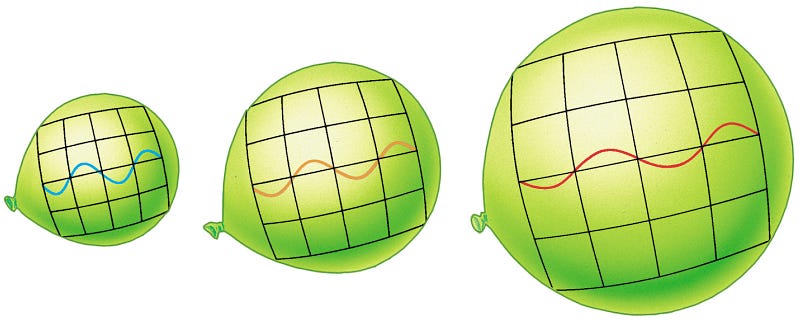
This cooling means that, at some point:
- it becomes cool enough that the spontaneous creation of matter-antimatter pairs ceases, meaning that all the excess antimatter will annihilate away,
- it becomes cool enough that atomic nuclei — made up of combinations of protons and neutrons — can form without immediately being blasted apart, and eventually,
- it becomes cool enough that neutral atoms can stably form, without enough energetic photons to reionize them.
This last step is incredibly important, because when the Universe undergoes this transition, it goes from an opaque, ionized plasma where photons constantly scatter off of electrons to a transparent state, where photons can freely stream, unimpeded by the (mostly invisible) neutral atoms.
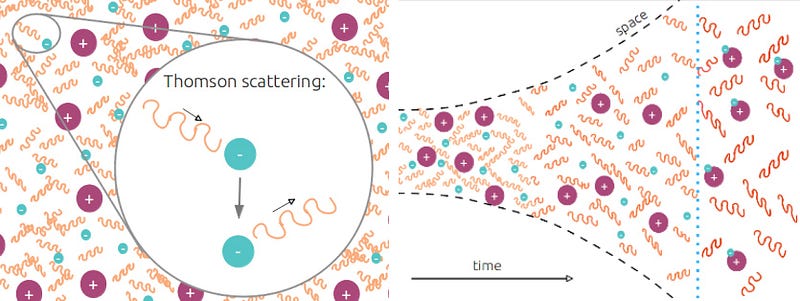
This is where the last-scattering-surface, or the CMB, comes from. When it first forms, it’s at a temperature of around 2,940 K, firmly the color of red light. Over the timeframe of around the next three million years, that CMB light will redshift out of the visible, becoming infrared exclusively and eventually, as time continues onwards, microwave wavelength light. Yet from that point — where the Universe emits the CMB at 380,000 years old — until the formation of the first stars tens of millions of years later, there’s no new light in the Universe that’s created that will be visible to us. This is what’s known as the cosmic “dark ages.”
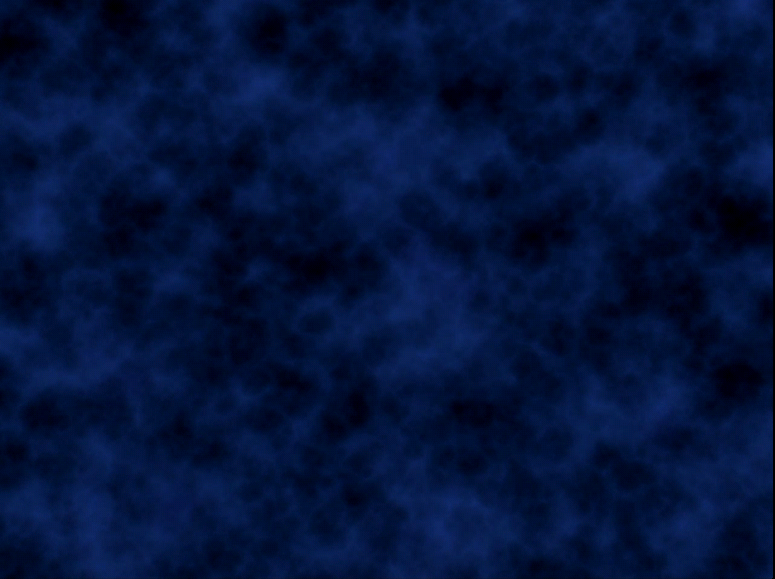
Steve’s question wanted to know about a whole lot of things, including the formation of stars, galaxies, and black holes. I’ve got bad news if you were hoping for that: that’s officially at the end of the dark ages, into the era of second light. If the Big Bang heralded first light, there’s no new source of it until you form the first stars, something that doesn’t happen until the Universe is between 50 and 100 million years old. (You may have heard a figure of 550 million years, but that’s for reionization of the Universe, not the formation of the first stars!)
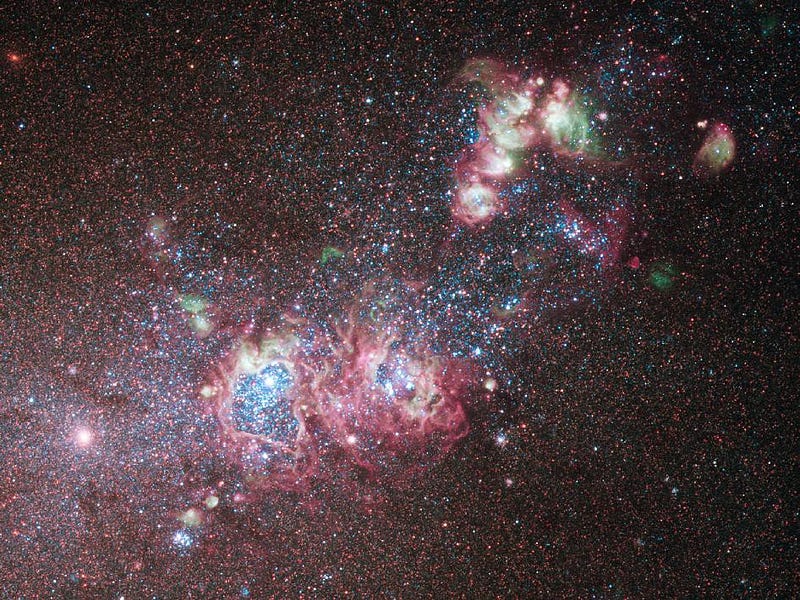
It’s only after the first stars form that we get the first black holes (from their deaths), the first supermassive black holes (from their mergers), the first galaxies (from the mergers of many star clusters), and larger structures later on. But what about that in-between time, after the CMB but before the first stars? Does anything interesting happen?
There are actually two affirmative answers to this, with one being potentially far more interesting than the other.
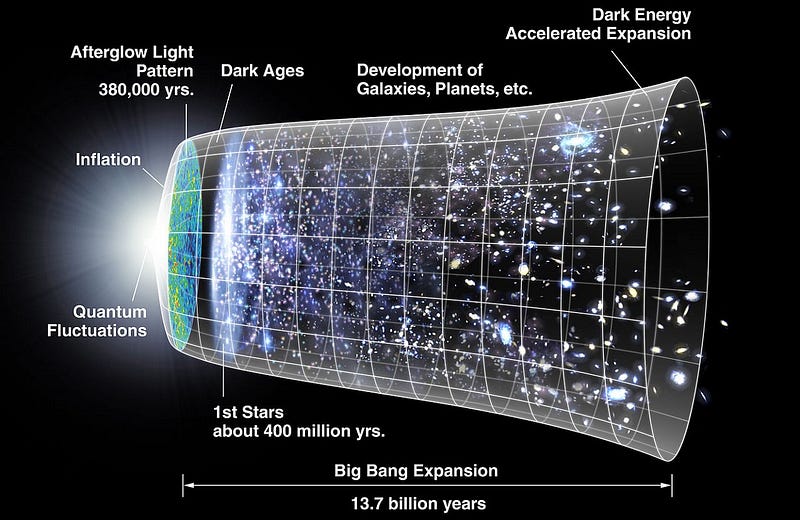
1.) Gravitational growth turns tiny, 1-part-in-30,000 overdensities, into the sites of our Universe’s first stars. Those fluctuations in the CMB? They’re not just pretty patterns uncovered by satellites like COBE, Boomerang, WMAP and Planck. Those “hot spots” (in red) that you see are actually regions where there’s slightly less matter than average in the Universe, while the “cold spots” (in blue) are regions with slightly more matter than average. Why? Because even though the CMB is the same everywhere, it has a gravitational sinkhole to climb out of, and the more matter you have, the farther you have to climb, and hence the more energy you lose on your way out.
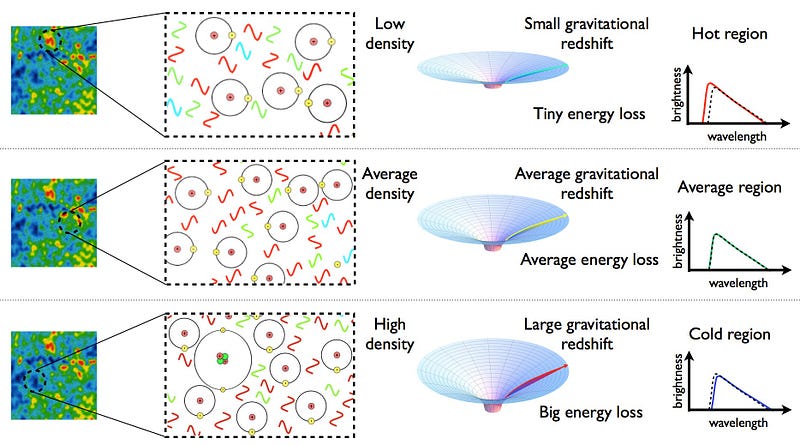
These cold spots that you see attract more and more matter — they grow over time — with the rate-of-growth increasing as matter becomes more important and radiation becomes less important. By time the Universe is 16 million years old, the typical overdense regions you see are ten times the magnitude they were at the surface of last scattering. The ones that were 1-part-in-30,000 overdense are now 1-in-3,000; the ones that were 1-in-10,000 are now 1-in-1,000, and the ultra-rare, large fluctuations, the ones that might’ve been 1-part-in-500 by the time of the CMB are now 1-part-in-50 overdense, or 2% denser than average. As time goes on, these overdensities continue to grow. Eventually, there’s a certain threshold that changes everything. When an overdense region reaches about 168% of the “average” density — or becomes 68% overdense — it hits the scale of nonlinearity, meaning that the gravitational accumulation of matter rapidly accelerates.
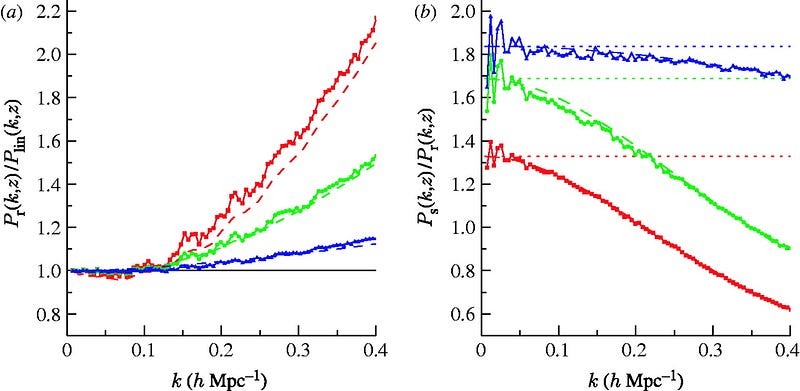
Once you cross this threshold, you’re well on your way to forming stars; it’s likely a less-than-10-million-year process from when you hit that threshold until you’ve got stars in your core. That’s why it might take many tens or even hundreds of millions of years of “dark ages” before a region of space will reach not-even-double the average density of the Universe, but once it gets there, it’s only a brief matter of time before it’s lighting up the depths of space once again. The era of second light will then be upon us, as the dark ages, the only period of time where there’s no visible light in the Universe, comes to an end.
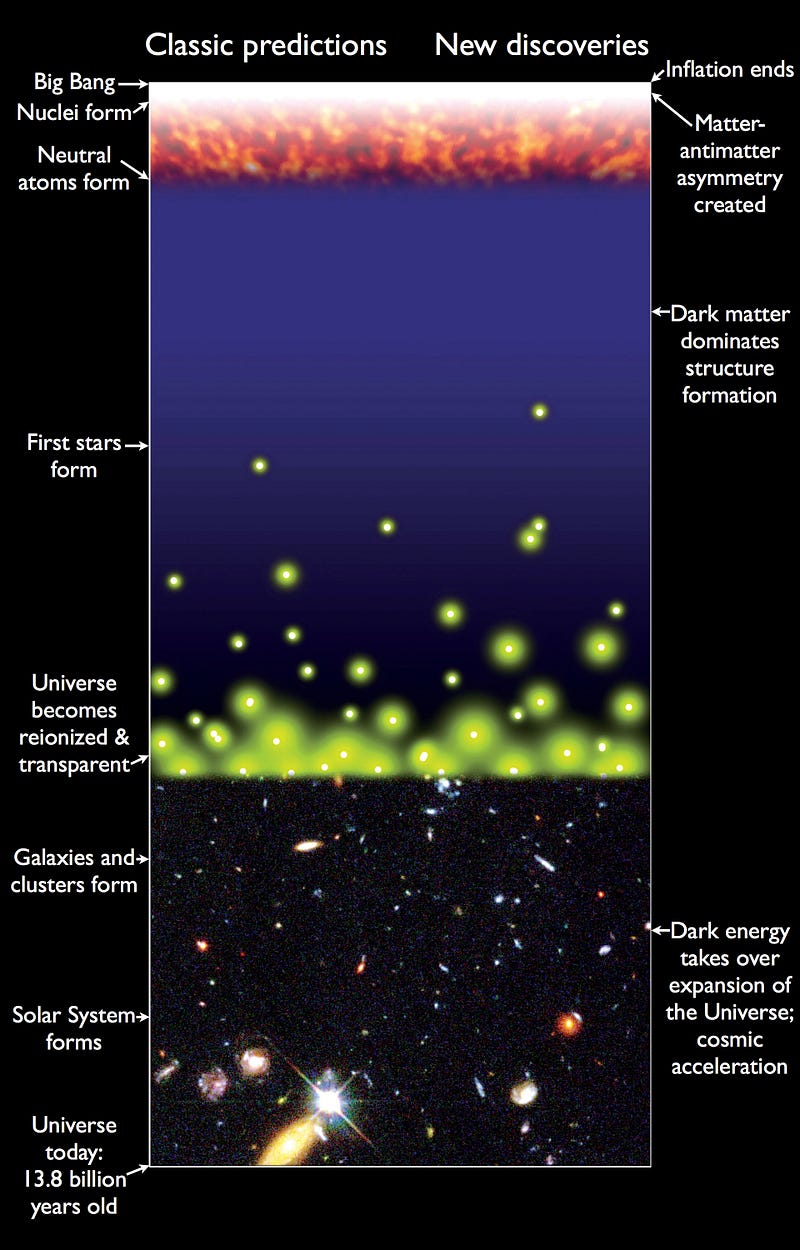
But the Universe’s dark ages aren’t totally, 100% dark. Sure, there’s no visible light around, but there is a little bit of light that does get created before you ever form a star, and it’s due to one of the simplest structures in all of the Universe: a humble, simple, neutral atom.
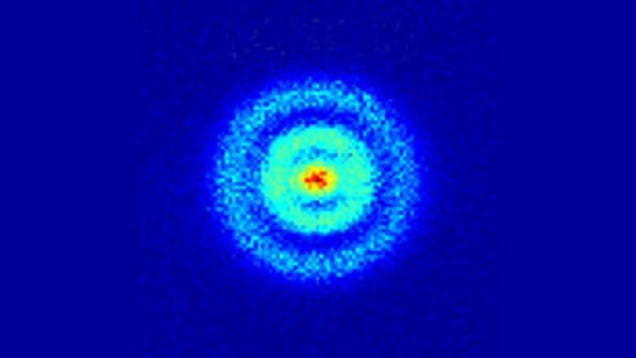
2.) These neutral atoms — 92% of which are hydrogen atoms — slowly release perfectly precise radio-wavelength light, at a wavelength of 21 cm. You normally think of hydrogen atom as a proton and an electron, with the light electron orbiting the proton. This is an incredibly accurate picture, one that’s as true today as it was 100 years ago when Niels Bohr first developed his model of the hydrogen atom. But one of the properties of protons and electrons we often ignore are of paramount importance during these dark times: the fact that they both have a spin, or an intrinsic angular momentum.
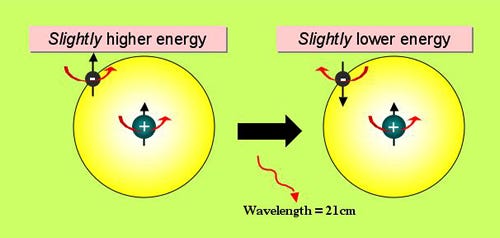
For simplicity, we can model the property of spin as being either “up” or “down,” and so if you have a proton and electron bound together, you can have them be aligned (up-up or down-down), or anti-aligned (up-down or down-up). Which one you form is random, and dependent on what the protons and electrons were doing when you first made hydrogen: initially about 50% are aligned and 50% are anti-aligned. There’s a tiny, tiny energy difference between the two states — corresponding to the amount of energy in a photon of 21 cm in wavelength, or 5.9 micro-electron-Volts — but the transition from the higher-energy (aligned) state to the lower-energy (anti-aligned) state is forbidden by the laws of quantum mechanics.
It’s only through an incredibly rare process, a transition taking an average of 3.4 × 10^15 seconds (or around 11 million years), that an aligned atom can become an anti-aligned atom, emitting this characteristic 21 cm photon in the process.
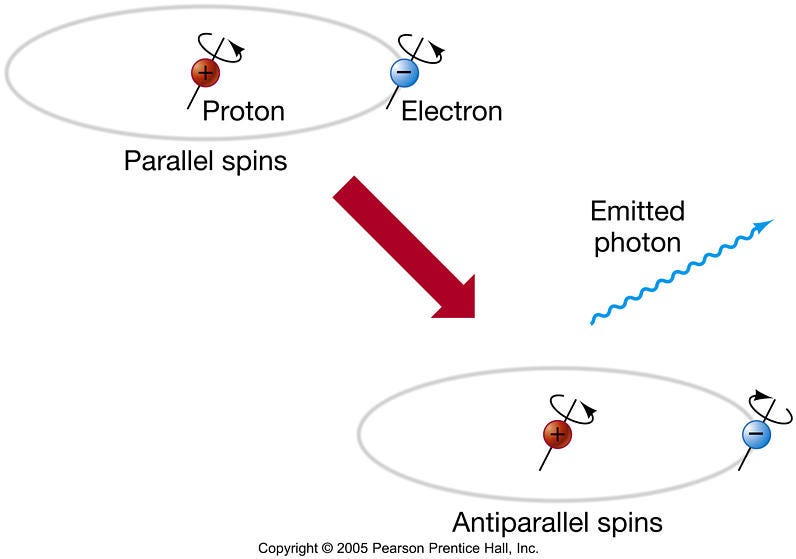
This “spin-flip transition” has never been observed in the laboratory due to these long lifetimes, but was discovered astronomically in 1951, and is of incredible importance for mapping out features where visible light simply won’t do. It is, after all, how we mapped out the spiral structure of our own galaxy for the first time, since seeing through the galaxy in visible light is impossible due to the dust in our galaxy. It’s also how we measure the rotation curves of galaxies out beyond the distances where stars exist; the 21 cm line is an incredibly powerful tool for astronomy.
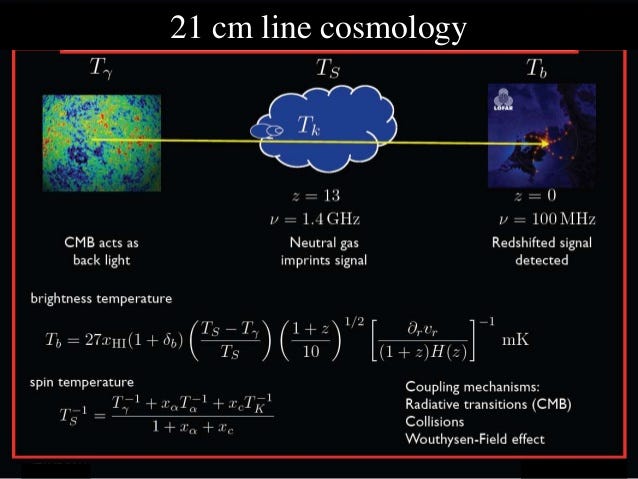
One of the goals of next-generation astronomy is to build a telescope that’s highly sensitive to the 21 cm line, with the hope of mapping out the Universe during the dark ages, something that’s never been done. It would extend our reach beyond what’s visible, beyond the era of reionization, and before even the first stars that the James Webb Space Telescope hopes to reach. While the dark ages might be aptly named, we have a chance to illuminate them through the faintest, lowest-energy light of all, light which will literally be tens-of-meters in length due to the Universe’s redshift, meaning we’ll need a telescope at least that large to see it. Ideally, it would be something like the Arecibo telescope, but in space, away from the radio sources of Earth.
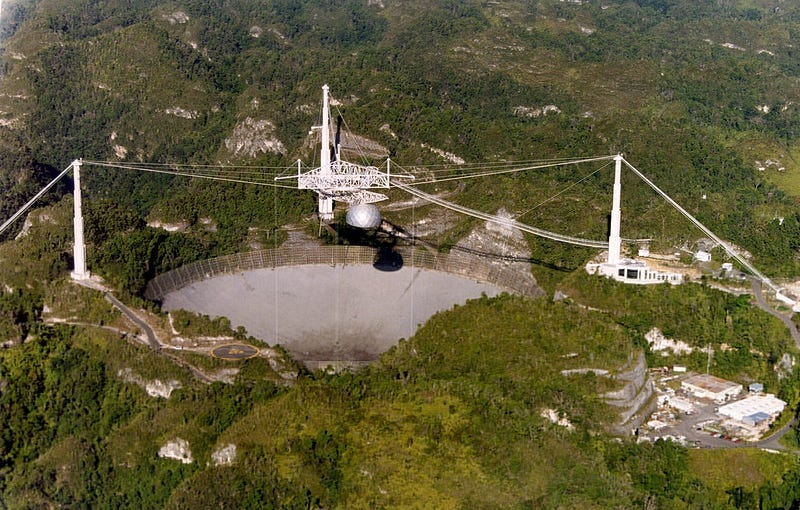
There are other possibilities as well, one of which was discussed by Amanda Yoho here. And that’s the story of the cosmic dark ages! Thanks for a great question, Steve, and if you’ve got questions or suggestions for the next Ask Ethan, send them in! The next column could be all yours!
Leave your comments at the Starts With A Bang forum on Scienceblogs.





